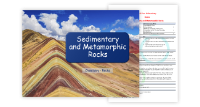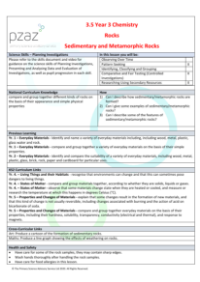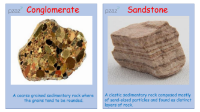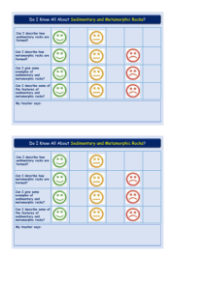Sedimentary and Metamorphic Rocks - Presentation

Science Resource Description
This presentation introduces students to the formation and characteristics of sedimentary and metamorphic rocks. It starts by posing key questions aimed at guiding the learning outcomes, such as the ability to describe how these rocks are formed, to provide examples, and to identify their features. The journey of sedimentary rock formation is narrated through the story of Yasmina's visit to a museum, where an overhead voice explains the process. It begins with the weathering of existing rocks into small pieces that are transported by rivers to larger bodies of water like seas or lakes. Upon settling at the bottom—a process known as deposition—these sediments are layered and over time, become compacted under their own weight. Water is squeezed out during this stage, and eventually, the particles are cemented together, forming sedimentary rock through a process that spans millions of years. Examples such as sandstone, mudstone, and limestone are highlighted, and the presentation likens the process to building a sandcastle, albeit on a geological timescale.
Metamorphic rocks, on the other hand, are formed deep within the Earth under conditions of high pressure and temperature, which alter the structure and appearance of the original rock without changing its basic composition, similar to baking dough into a cake. The presentation illustrates this transformation by comparing sedimentary limestone to its metamorphic counterpart, marble, and also mentions granite and gneiss to show the diversity of rock types. The concept of rock porosity is also explored, demonstrating how different rocks contain various amounts of tiny holes or 'pores' that can store water or oil, making them crucial for natural resources. Students are encouraged to conduct investigations, such as measuring how much water a rock can absorb, and to create their own visual aids, like cartoons, to solidify their understanding of these geological processes. The presentation concludes with a review of the main stages of rock formation and a self-assessment to ensure the students have grasped the key concepts.






